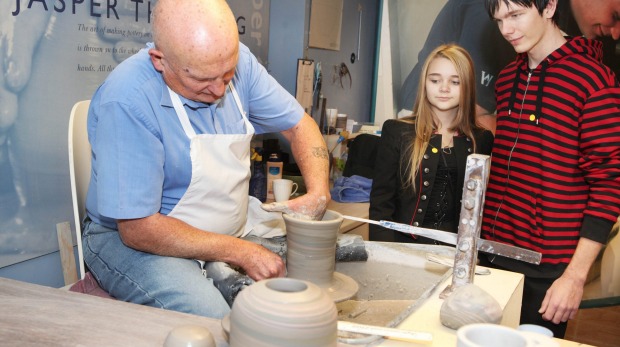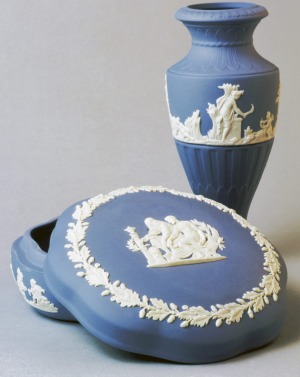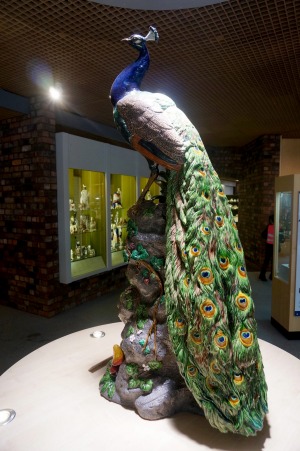
Sometimes serendipity is the greatest travelling companion.
Last September, I visited friends in Staffordshire in the unfashionable British Midlands (although the countryside around them is mind-bogglingly stunning). As my sons wanted to visit Alton Towers, Britain's premier theme park, with their English godmother, I was left with a free day to explore.
My unlikely destination? Stoke-on-Trent.

I know. If the Midlands are unfashionable, Stoke is the equivalent of 1970s bell-bottomed jeans paired with 19th-century clogs.
Why Stoke? Surely not just to say I've been to, arguably, the most boring city in England? Initially, I planned to spend the day on an Arnold Bennett literary trail. Largely forgotten now, Bennett was the D. H. Lawrence of what in England are known as "the Potteries", originally a handful of neighbouring towns - the largest being Stoke. Bennett, a journalist and novelist, had a fascinating life and an eclectic mix of friends, but his best work is set in his native Potteries, most famously his novel Anna of the Five Towns.
Sadly, there is nothing much to see of Bennett in his home town any more. The museum once devoted to him, in the house where he was born, is now closed - purchased by an Indian family as a family home. So I opt instead to visit whatever potteries survive in the Potteries.

First stop? The Potteries Museum and Art Gallery, which claims to house "the world's greatest collection of Staffordshire pottery". To be honest, I'm usually not that impressed by pottery, but this museum is a revelation.
For the first time, I understand why pottery and ceramics have been the most enduring art form for the past 5000 years. Have you ever tried to drink water from a canvas painting? Or tried to light a candle from a wooden sculpture?
Here, I finally learn why these few towns gave birth to the one of the most important planks of the Industrial Revolution - mass-produced pottery that could be exported around the world. They had the vital ingredients:existing cottage industry skills; ample clay (for the pots); coal (to fire the kilns); water (to power the machinery); and that indescribable bonus - a technical genius with an eye for a fortune.
The Potteries had at least two such geniuses, both named Josiah - Spode and Wedgwood, whose names still echo around the world more than 200 years later.
Spode established the distinctive blue underglaze transfer printing style associated with his name. He also perfected the recipe for bone china. (Don't ask: it involves real bones.)
Sadly, the historic Spode factory and visitor centre is now closed. Both the Spode and Royal Worcester brands went into receivership in 2009, although their traditional designs are still made in Stoke by the Portmeirion Group, founded by pottery designer Susan Williams-Ellis.
So, I move on to the next highlight on the Potteries hall of fame. Emma Bridgewater is the celebrity potter equivalent of chef Jamie Oliver. Her kitchenware and wider ceramic output - often featuring multi-coloured spots, hearts, wildlife and clever use of typography - sells internationally, mainly because it is attractive and fun.
Bridgewater's factory is a traditional 19th-century pottery that has been turned into a modern visitor's centre with regular factory tours.
But now it is time for the big one: the Wedgwood Visitor Centre and Wedgwood Museum, a 15-minute drive south of Stoke. When I arrive, it is in the middle of a £34 million ($67 million) redevelopment, reopening in June with a spectacular visitors centre and restaurant to join the already built modern musuem.
And yet the future of the Wedgwood Collection - the ceramic jewel at the heart of the complex - is up for auction. There's a £134 million debt to pay off. It's been headline news in Britain for months, with Unesco declaring the collection "unparalleled in its diversity and breadth", with more than 80,000 works of art, ceramics, and documents, plus paintings by George Stubbs and Joshua Reynolds.
I sign up for the factory tour. We talk to the pottery makers and artists as they demonstrate craftsmanship that hasn't changed in generations. We learn all about Wedgwood - a true entrepreneur and contributor to the Age of Reason, a leading anti-slave campaigner and scientist, a friend of Erasmus Darwin and Sir Joseph Banks.
We see the different glazes Wedgwood pioneered: the cream-coloured "Queen's Ware" he designed for Queen Charlotte and Empress Catherine II of Russia, and the celebrated Jasperware he invented in 1773, usually blue with white relief, which became his signature.
The factory tour is fascinating, but the museum is the highlight - not only giving you the full story of Josiah and Sarah Wedgwood, but linking it to the history of ceramics through hundreds of exquisite pieces.
I leave with a sense of overwhelming sadness that all this is to be broken up.
But then, a few weeks later and back in Australia, I read a story on the BBC website, headlined: "The Wedgwood Museum has been 'saved for the nation' after reaching its £15.75 million target in a month".
Sometimes, there are happy endings.
visitstoke.co.uk.
Stoke is three hours by car from central London, or an hour from Birmingham and Manchester. There are regular train services from London, Birmingham, Manchester and other major British cities.
Steve Meacham travelled at his own expense.